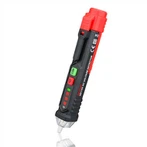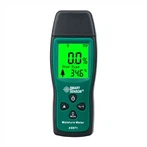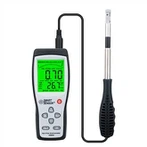How to judge whether the temperature sensor is good or bad using a multimeter
Nowadays, electric water heaters have entered ordinary people's homes and have become one of the main household appliances. The temperature sensor of the water heater is the main measurement sensor for obtaining the heated medium water. If the temperature sensor is damaged, the temperature of the measured medium water cannot be accurately and timely obtained, making the electric water heater unable to accurately control the temperature.
The temperature sensors used in electric water heaters mainly include thermistor temperature sensors and platinum thermal resistance temperature sensors. They output resistance signals to the secondary instrument thermostat. Among them, the thermistor commonly used in electric water heaters is a thermistor temperature sensor with a negative temperature coefficient. As the temperature increases, its output resistance becomes smaller. The output of a platinum thermal resistor becomes larger as the temperature increases.
Multimeter to measure the quality of NTC thermistor
Place the water heater's temperature sensor at room temperature. Connect the two test leads of the digital multimeter to the two pins of the thermistor to measure its actual resistance. Then compare the measured actual resistance with the nominal resistance. If the difference between the actual resistance and the nominal resistance is ±2 ohms, it is considered normal. On the contrary, the performance of the thermistor temperature sensor becomes worse or even damaged. You can also test the thermistor by heating it with a lighter. If the resistance of the multimeter decreases as the temperature increases, it means that the thermistor temperature sensor is normal. If the resistance value does not change, it means that the thermistor temperature sensor damage.
Use a multimeter to measure the quality of the platinum thermal resistance temperature sensor
Since the platinum thermal resistance temperature sensor has three lead wires, find out which wire has a different color and use one of the multimeter leads to connect it. Another test lead is connected to two additional leads. Measure the resistance values separately. If the resistance value is found to be infinite or lower than 100 ohms after measuring in pairs, it means that the platinum thermal resistor is damaged. If the resistance values are different after two measurements, it means there is a problem with the compensation line or its lead wire of the platinum thermal resistor. At the same time, you can manually heat the platinum thermal resistor. If the resistance value does not change, it means that the platinum thermal resistor is damaged. If the measured actual resistance value is significantly different from the nominal resistance value, it indicates that the performance of the platinum thermal resistor is deteriorating.
Therefore, if the electric heater wants to control the temperature properly, its temperature sensor is very important. If the temperature sensor fails, the thermostat of the electric water heater cannot receive the resistance signal transmitted from the temperature sensor, so the temperature control system fails. No matter how the temperature set value is set, it cannot control it. Because there are four links in the closed control system, the damaged temperature sensor is the detection and transmission link, so if there is a problem with the detection instrument in this link, the thermostat will no longer be able to control it.
The temperature sensor is a variable resistor controlled by temperature. It can be measured with the 100K resistance range. If it is a sensor with a negative temperature coefficient, the resistance will decrease when the sensor is heated. If it is completely open, there is no need to measure it. It is definitely It's broken. If the temperature of the temperature sensing part of the sensor changes but the sensor resistance does not change, there is also a problem!
Use a multimeter with a resistance of 1KΩ to measure the resistance value of the two legs (note that your hands should not touch the resistor tube). Then, pinch the resistor itself with your hands to see if the resistance value slowly increases. If it increases slowly, it is good. If A short circuit, open circuit or constant resistance means it is bad. The specific resistance value is not necessarily the same as the thermistor value selected by the brand, so it should be based on actual measurement.
Use the ohm setting of the multimeter to measure the temperature sensor, and then heat it with your hands. If the resistance changes, it is good. If the resistance value does not change or there is no resistance value, it is bad.






